Brutalist Design Is Having a Moment—Here's Why
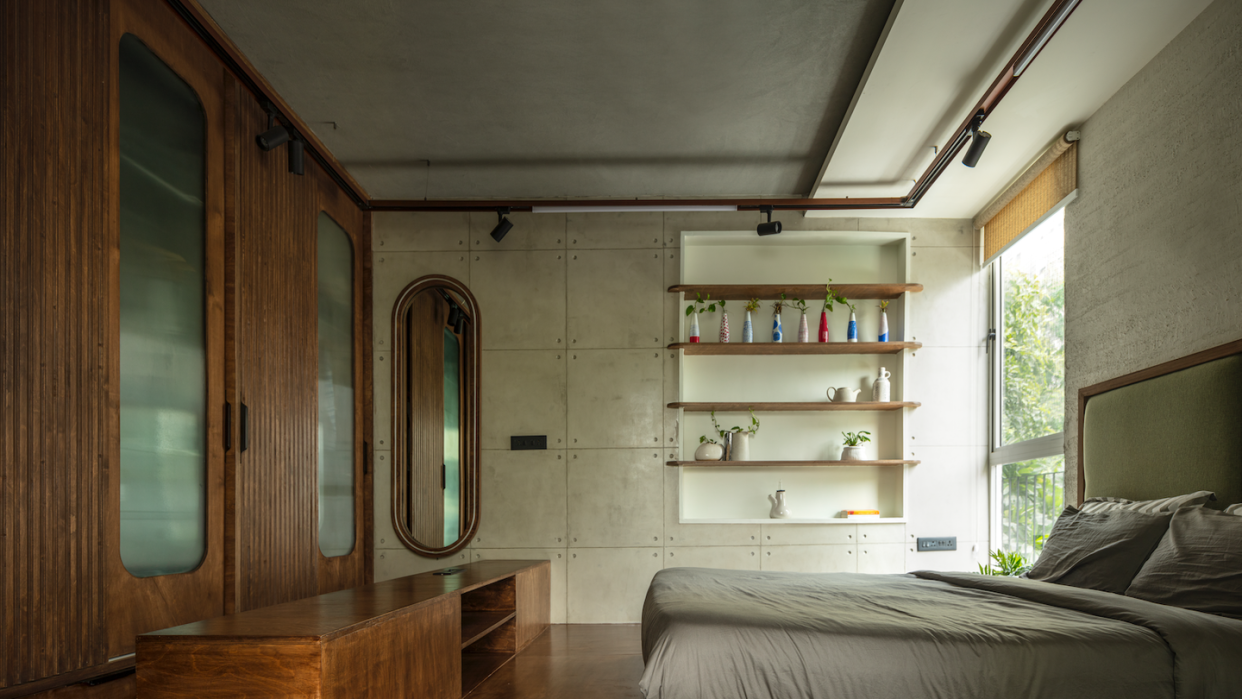
"Hearst Magazines and Yahoo may earn commission or revenue on some items through these links."
Brutalist design was (and still is) a style critics love to hate. Known for its unapologetic use of raw materials like concrete and metal and geometric shapes constructed at a gigantic scale, the Brutalist movement is striking and divisive, and one that set up contemporary responses found in today's design landscape.
"Good architecture is not about the last perfect building; it's about beauty, scale, and rhythm that can be expressed through construction, setting up dialogues for continuity and contrast," says Akshat Bhatt, principal architect at the New Delhi, India, firm Architecture Discipline. "Brutalism is an expressive architecture style that realizes bold forms by emphasizing construction, textures, and raw, exposed materials such as concrete."
What's unique about Brutalist design is its expression through simple materials. Instead of focusing on lavish finishes, the Brutalist style keeps things minimalistic by letting the organic shapes shine through stripped-down materials. As the movement gained momentum from the 1950s to 1970s, some found the style to be austere and menacing because of the harsh plainness the design imposes.
Today, Brutalist design is getting reinterpreted in sleeker, grander ways by architects such as Tadao Ando, the Japanese Pritzker Prize winner who has designed residences for the likes of Beyoncé and Jay-Z and Kim Kardashian.
In this guide, we'll review the Brutalist design in greater detail by revisiting its historical context, identify the characteristics of Brutalist buildings, and take a look at contemporary buildings that adhere to the style.
What Is Brutalist Design?
The Brutalist architecture and interior design style uses raw materials like concrete and brick to form striking shapes at a massive scale. "Brutalist buildings often have a stark, monolithic appearance, with exposed concrete as the primary building material," says Nancy Parish, an interior designer in Charlotte, North Carolina. "This creates a distinct visual impact, emphasizing the building's solidity and permanence."
In Brutalism, there is no shape that fits all. Some buildings use a conglomerate of shapes to form a truly abstract design that's still functional at heart. Brutalist buildings are rooted in communal living, which is why the buildings are typically large and harsh.
History of Brutalist Design
Though Brutalism technically dates back to Le Corbusier's love for concrete and prolific use of it, especially in the iconic Unité d'Habitation in Marseilles, the well-known version came into play during the 1940s in England, Pixel Design Collaborative cofounder Kendal Rodgers says. "The classic Brutalist style really emerged and became popular in the UK following World War II as a way to create large, minimally decorated public buildings," she says. At the time, European cities were in the process of rebuilding and needed places for civilians to live. Government housing was constructed at a large scale and out of raw materials such as concrete since the material was far less expensive than others at the time. "It kept it," says Rodgers, expanding beyond England and France into the United States and beyond, "until it began to go out of fashion in the '70s."
In the meantime, Brutalist design also influenced residential architecture, with architects like Marcel Breuer (who straddled the Bauhaus design and Brutalist design movements) building clusters of homes in Connecticut and Massachusetts.
Characteristics of Brutalist Design and Architecture
Knowing the standard characteristics and attributes of the Brutalist style makes buildings in the style easy to identify. With their monumental scale, they're also not hard to miss.
Unusual or geometric shapes
Raw, exposed materials (such as concrete or brick)
Boxy or stacked construction
Utilitarian feel
Monochromatic palette
No embellishment
Clean, simple lines
Enormous sizes
Stark, bleak, and heavy in appearance
Does Brutalism Follow a Philosophy?
"Although Brutalism doesn't have a formal philosophy, some architects and critics have associated certain principles with the style," Parrish explains. "One common interpretation is that it showcases a sense of honesty in design, where the materials used are left bare and the function of the structure is clearly expressed. One way to interpret this method is that it involves the avoidance of embellishments found in modernism and instead emphasizes the innate properties of materials such as concrete."
Even though it tries to be the opposite, Brutalism has close ties with modernism since they both focus on "honesty" through the natural appearance of shapes. But, when Brutalism emerged, it was supposed to be a contrast to the more embellished modernist aesthetic by being more subdued, elevating functionality over ornamental construction, and keeping this purpose at the heart of its philosophy.
Famous Examples of Brutalist Design
Habitat 67 – Montreal, Canada
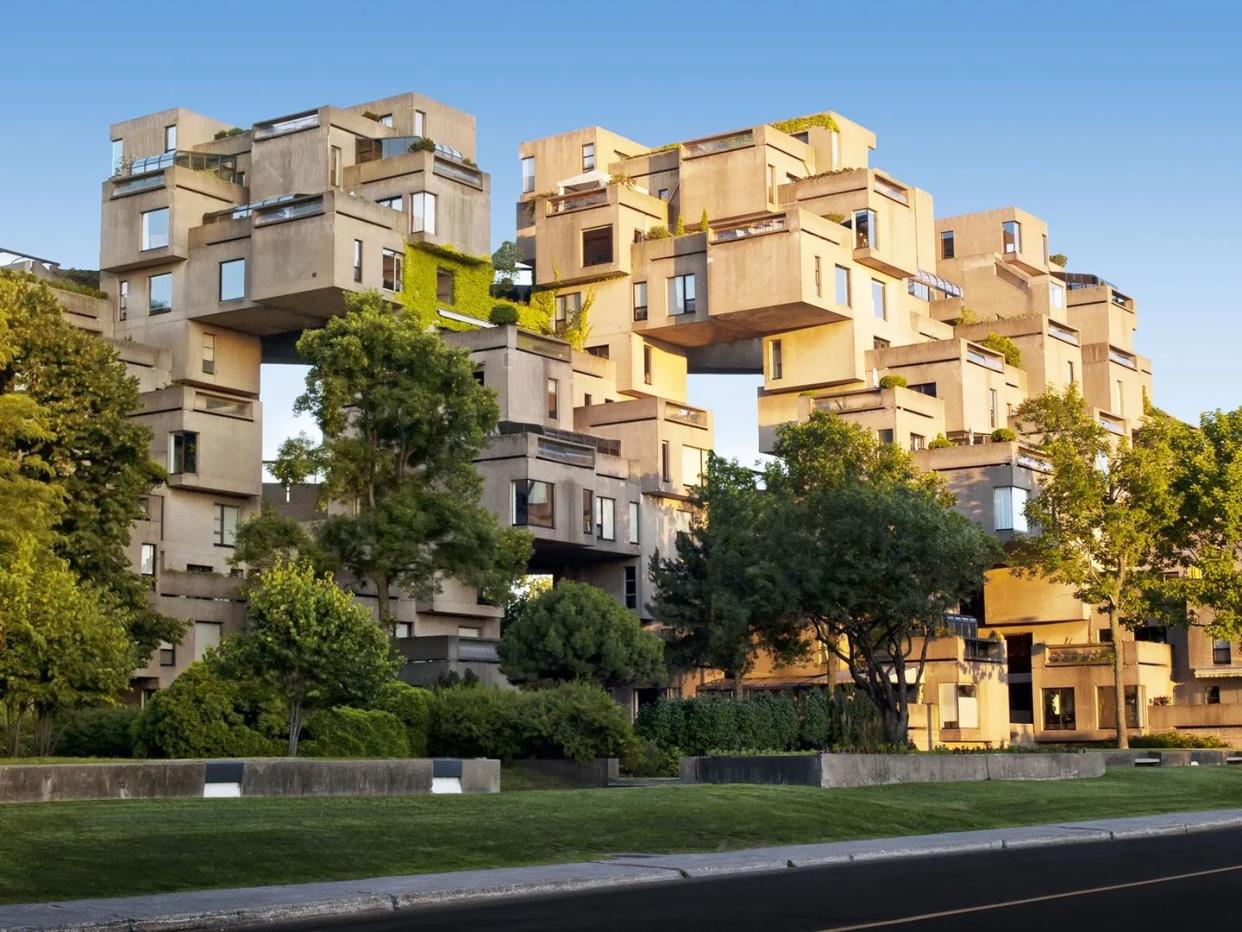
Designed by Moshe Safdie, an Israeli-Canadian architect, Habitat 67 epitomizes Brutalist design. Looking at the complex, you immediately notice the boxy appearance that creates a pop-out illusion on a vast, large scale.
Parrish says the housing complex was built as an experimental housing complex for Expo 67 and combines elements of Brutalist architecture with modular construction. "Habitat 67 is considered a Brutalist design due to its raw concrete exterior, geometric form, functionality over form, lack of ornamentation, and robustness. These features align with the key principles of Brutalist architecture, making Habitat 67 an iconic example of this style."
The Barbican Centre – London, England
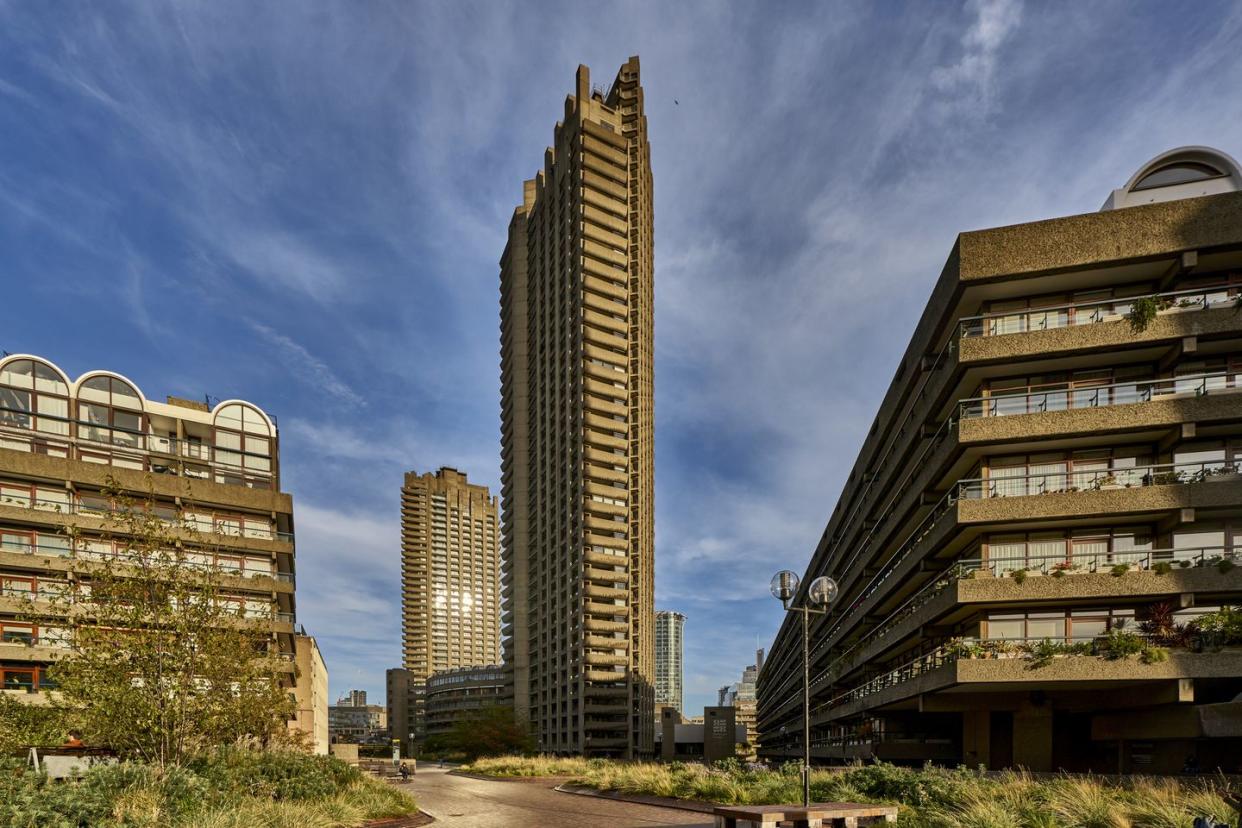
"The Barbican Centre in London is an excellent example of Brutalism in practice," says Rogers of the performing arts space. "Walking around the Barbican, you see many different applications of concrete, from the grandiose to the fine details. Imposing round columns that support a floating pavilion overhead are grounded in a brick pavilion, while protruding balconies formed from high-aggregate concrete cantilever out to shade parts of the park."
Geisel Library – San Diego, California

On the campus of University of California San Diego sits the stunning Geisel Library, which is easily identifiable as a Brutalist building. Constructed predominantly of concrete, the building contains tiers of floor-to-ceiling windows. Stepping up close to the library, you feel the looming presence Brutalist buildings can evoke.
Marina City – Chicago, Illinois
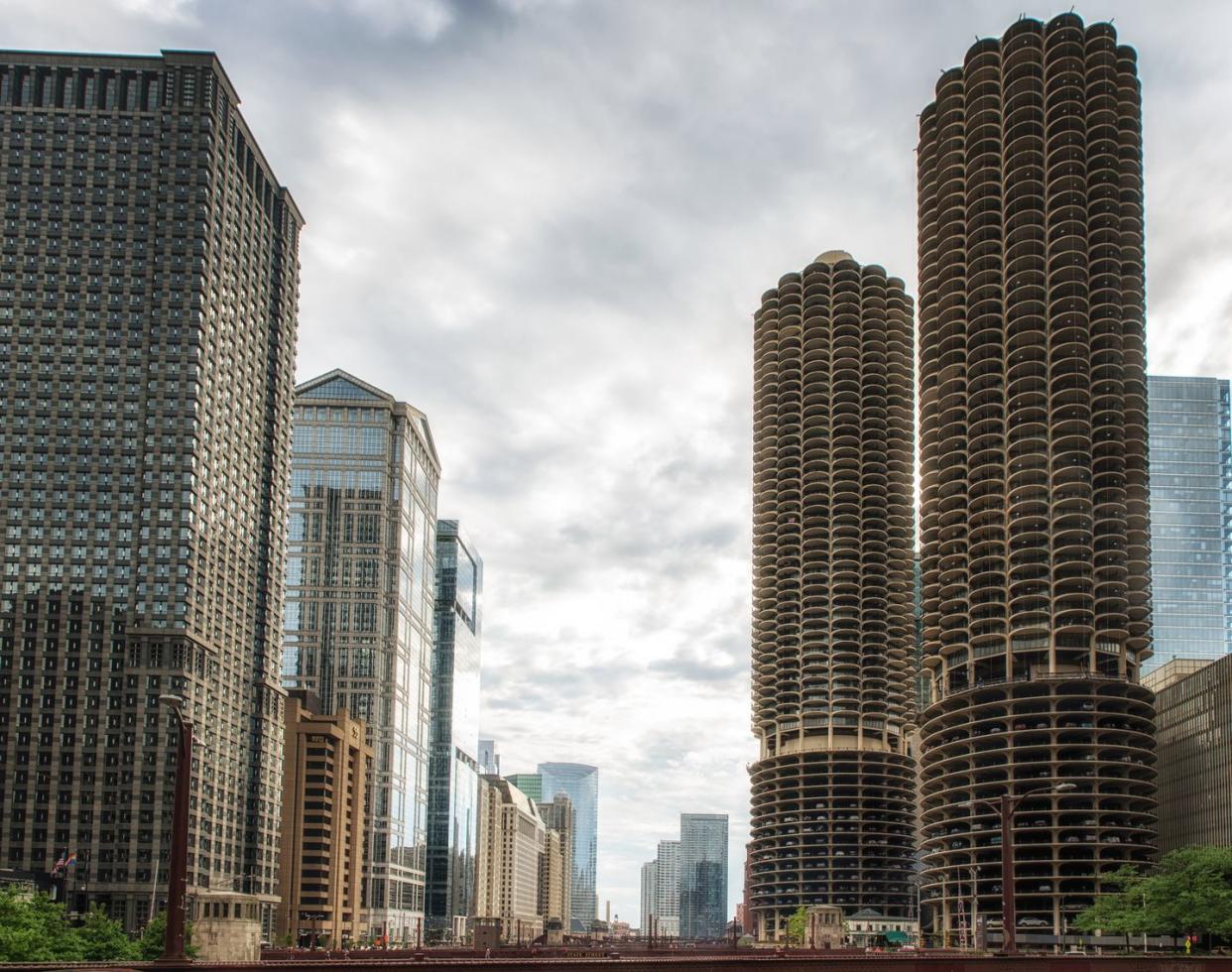
The scallops of these twin towers are the instant eye-catchers on these Brutalist buildings, which are also reminiscent of the Art Deco style. The apartment complex has 900 units, each with its own balcony.
Boston City Hall – Boston, Massachusetts
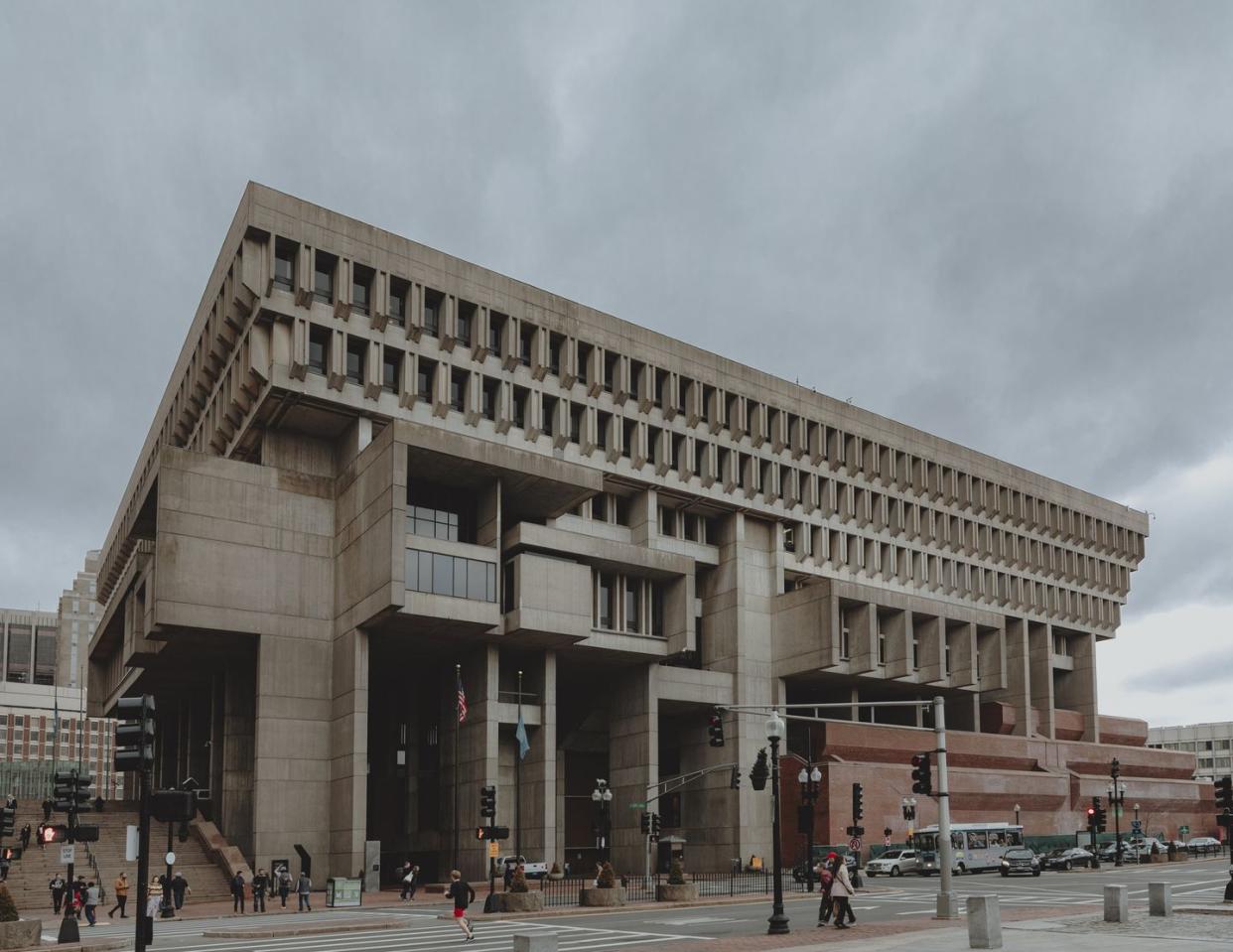
Another famous example of Brutalist design is Boston City Hall, which follows the style inside and out with its intricate concrete construction on a large scale. The only relief is the small line of windows and elevated walkways.
Wotruba Church – Vienna, Austria
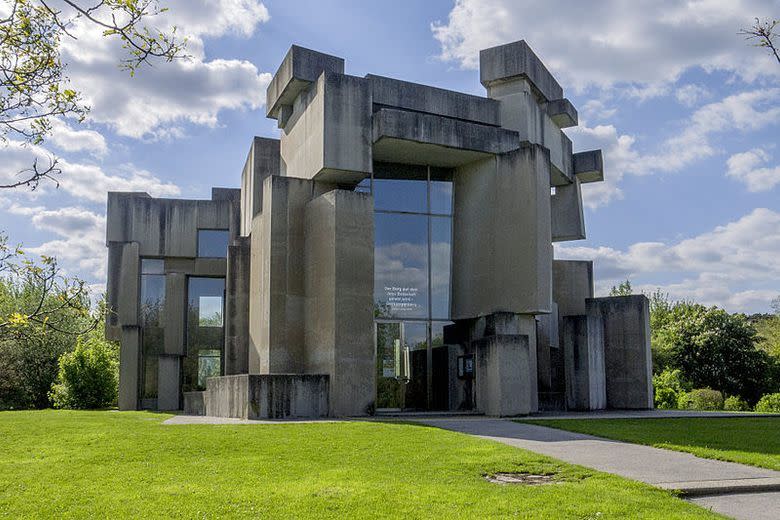
This stunning church designed by Fritz G. Mayr was built in 1976 and is one of the most popular Brutalist buildings. Wotruba Church showcases blocks of a variety of sizes but still details the concrete predominately used in this style. With the variance in shape sizes, this building adds an element of artistic value for an interesting visual.
FAQ
Why Is It Called Brutalism?
"Funny enough, it has nothing to do with the criticism of the style as being "brutal," Rogers says, adding that brutalism derives from the French phrase béton brut, which translates as "raw concrete."
Why Was Brutalism So Controversial?
Architecture and interior design may be subjective, but Brutalism has generated perhaps more than its fair share of controversy, which led to it falling out of fashion in the 1980s.
"This architectural style began to decline in the 1970s and 1980s due to the high maintenance cost, and many at that time saw this style as ugly and oppressive,” says Liz Goldberg, founder and creative director of CAROLYNLEONA, a design firm in Raleigh, North Carolina. "It can be associated with poverty, such as public housing, and often large structures that highlight function over form."
Other than its ties to poverty associated with the government housing needs, Tyler Markham of the home decor and lighting company Regina Andrew Detroit says its functionality contributed to the widespread dismissal. "The public tended to dislike it as Brutalist buildings weathered easily due to the concrete facades and looked 'cold' in appearance. Not only that, but the structures themselves were prone to vandalism and damage due to their blank-canvas walls and large expanses of untouched space. The surfaces were often covered in moss, rust stains from steel bars, and graffiti."
Is Brutalism Still Popular Today?
We haven't seen the last of Brutalism, says Pixel Design Collaborative cofounder Maria Gossett. "Brutalism is undeniably having a moment," she says. "I think this is due, in part, to the more prevalent use of industrial materials in spaces. We are all much more comfortable and familiar with concrete as a medium, and there is something to the lack of frills and decorations that makes the style feel honest."
Parish agrees and adds that the full-circle moment we're seeing in architecture and interior design today owes to the functionality and ties to urban living of the past. "Many Brutalist buildings were designed with a strong emphasis on public spaces and communal living, which align with contemporary concerns about sustainability and urban planning. By prioritizing the needs of the community, Brutalist architects laid the groundwork for modern-day sustainable urban planning."
Working on a design project? Let us help!
Follow House Beautiful on Instagram and TikTok.
You Might Also Like
